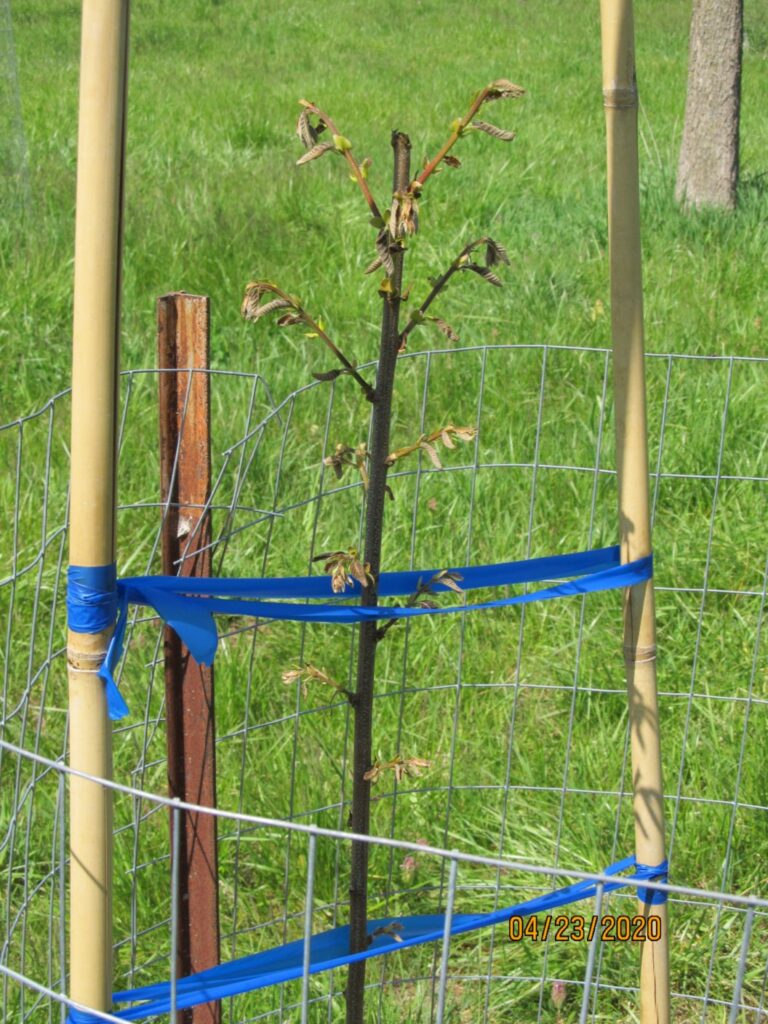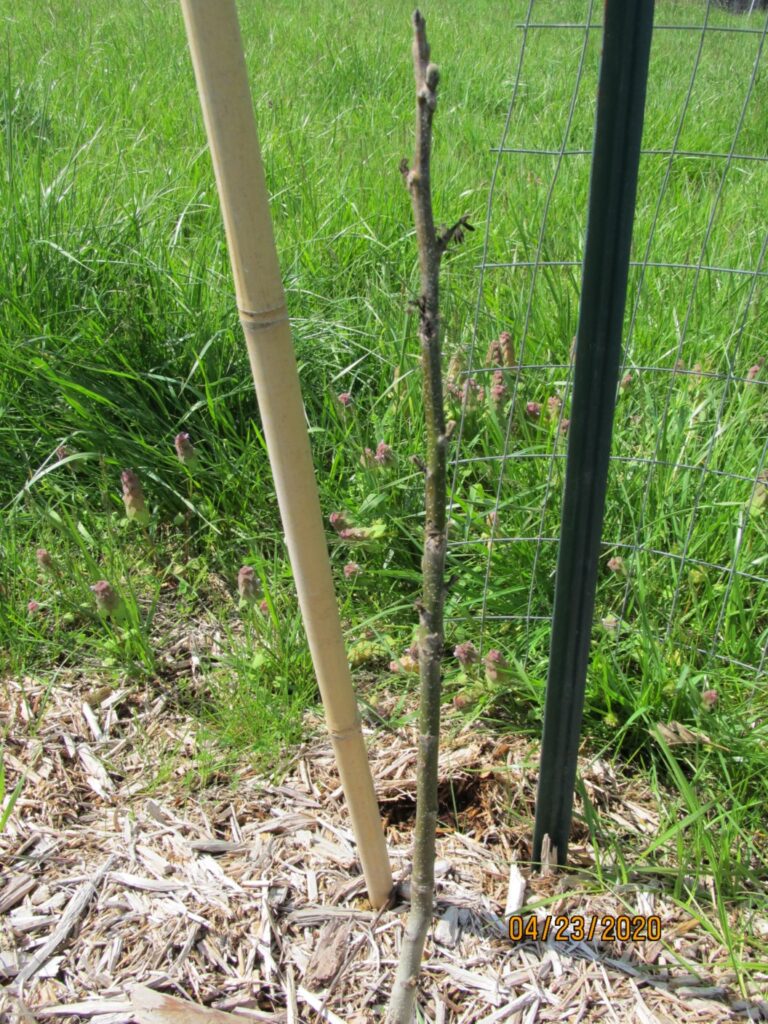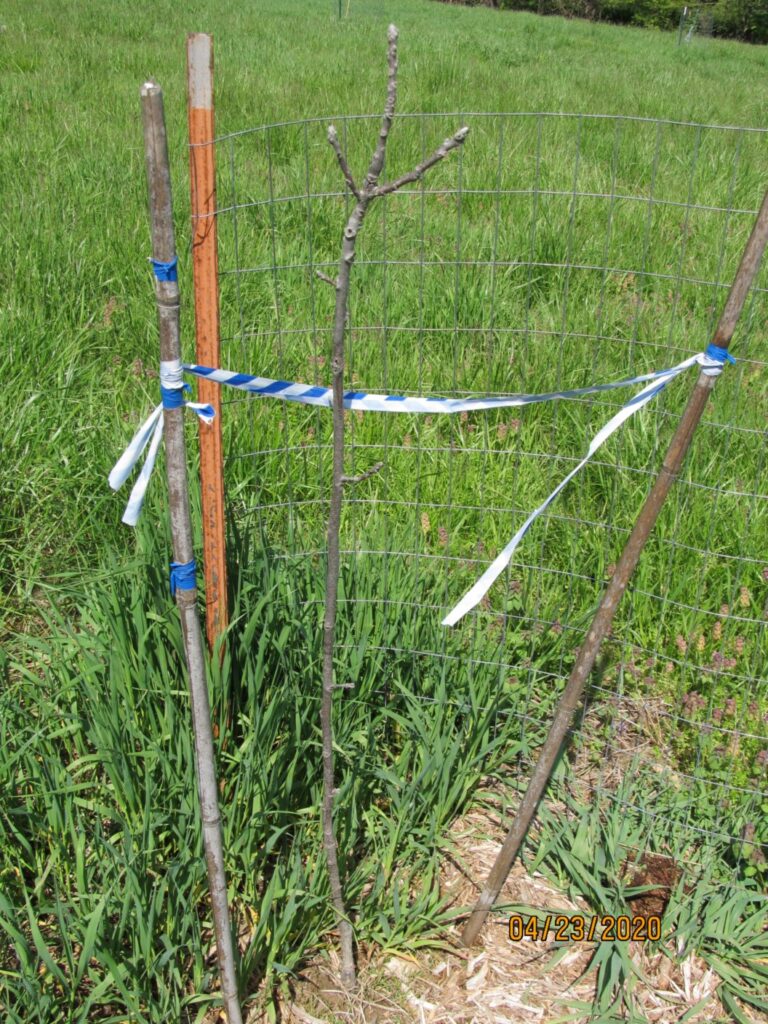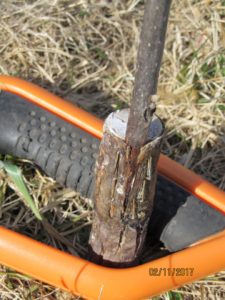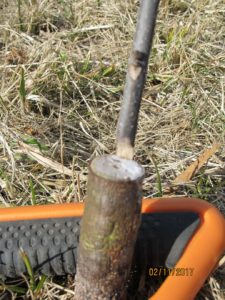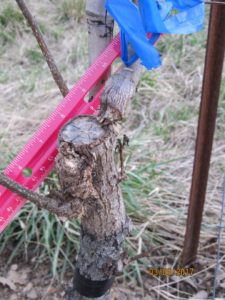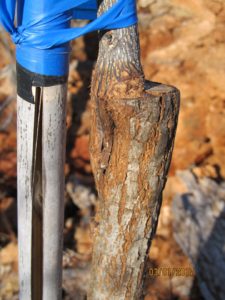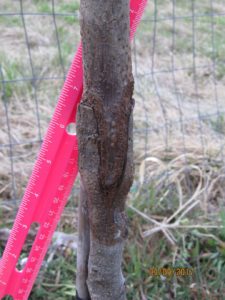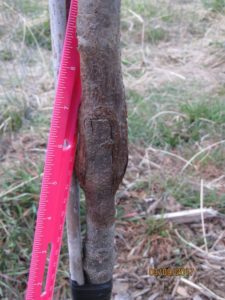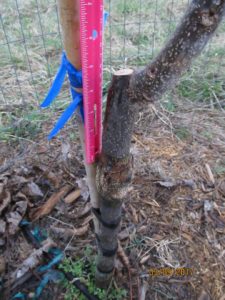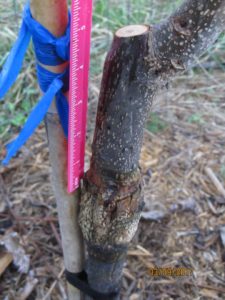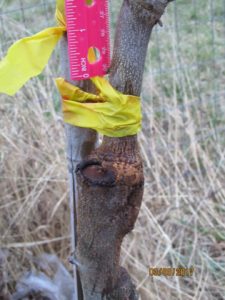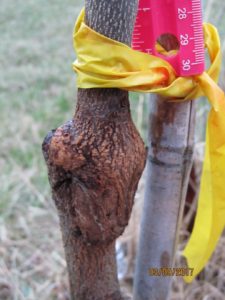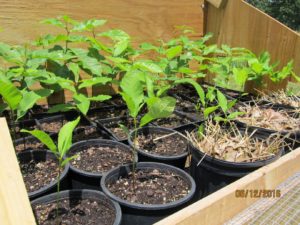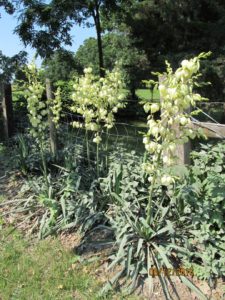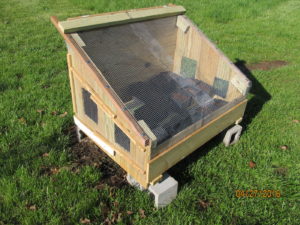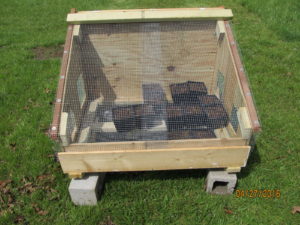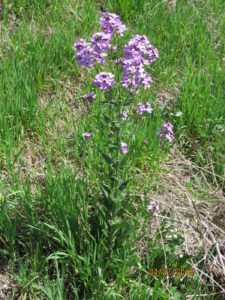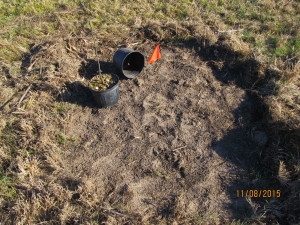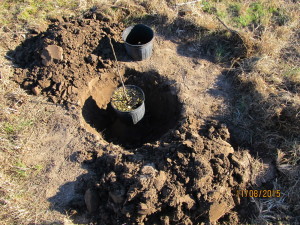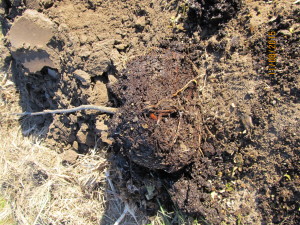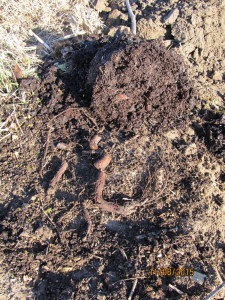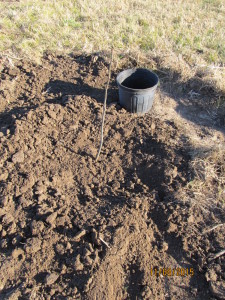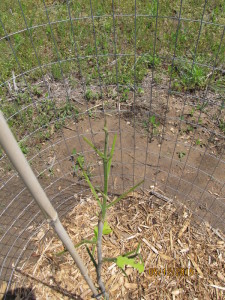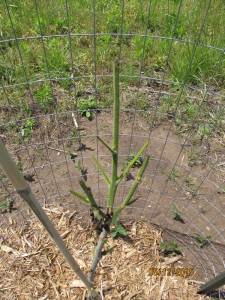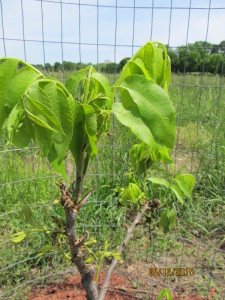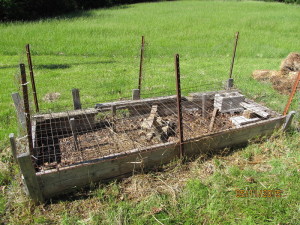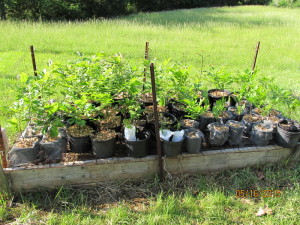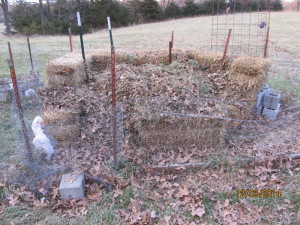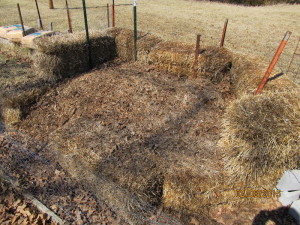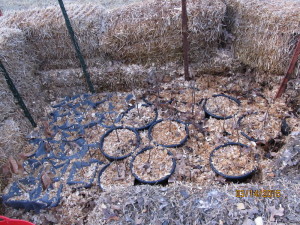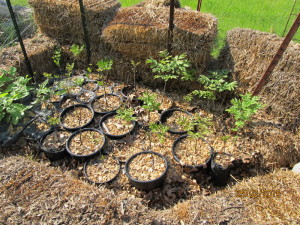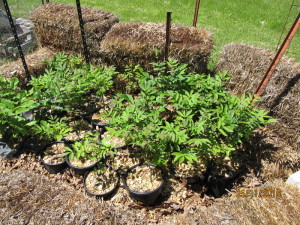In the two pictures below the brown areas are bare ground where I transplanted pecan trees from pots into the field during November.

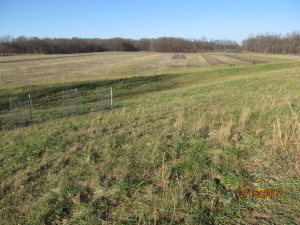
The following paragraphs list some of the work performed on the property in 2015.
Some common tasks performed on all young trees in the field included:
A. pruned trees in February
B. hoed weeds during the growing season
C. fertilized trees in March and June
D. tried to train trees to grow as I wished by pruning during the growing season
E. watered trees during dry periods
Work on the pecan trees included:
A. bought 45 grafted pecan trees in pots and transplanted them into the field
B. nursed 15 one-year old pecan seedlings in pots that I had sprouted from seed in May through the Summer
C. transplanted those 15 seedling pecan trees into the field in the Fall
D. grafted 15 pecan seedlings in the field – of which only 5 grafts were successful
Currently there are about 250 young pecan trees in the field.
Work with the Chinese chestnut trees included:
A. transplanted 7 seedling Chinese chestnuts that I had sprouted from seeds into the field
B. bought 3 grafted Chinese chestnuts in pots and transplanted them into the field
Currently there are 60 chestnut trees in the field.
In May I sprouted pecan seed nuts and nursed the young seedlings through the summer. Now, there are 40 sprouted pecan seedlings bedded down in a straw bale fort to protect them from the winter weather until next Spring.
Although all the trees were pruned in February, pruning is a continual process during the growing season. The purpose is to train the trees to grow limbs in a specific manner. A major problem that I have is that after I prune a tree, the tree often does not agree with my decisions. It then grows limbs in places that I do not want limbs to grow. Looking back I can sometimes see that the trees decision was better than mine. But, that is rather frustrating. Hopefully, more experience with pruning and tree growth will bring the decisions of the tree and my pruning decisions into better agreement.
Other tasks involved general maintenance of the property:
A. mowing all the grassy areas two or three times to control the serecia lespedeza and other weeds
B. cutting down thorny locust trees and autumn olive bushes
C. putting up bird houses for the bluebirds – made 3 new houses
D. putting up raptor perches for the hawks and owls to use when they are looking for mice – made 6 perches
E. painting the roof of the building
F. working on the fences
G. making storage carts that can roll around on the concrete floor of the garage – made 6 carts
This blog was also started as a record of activities.
So much for 2015 – now it is time to move on to 2016 and more of the same!

